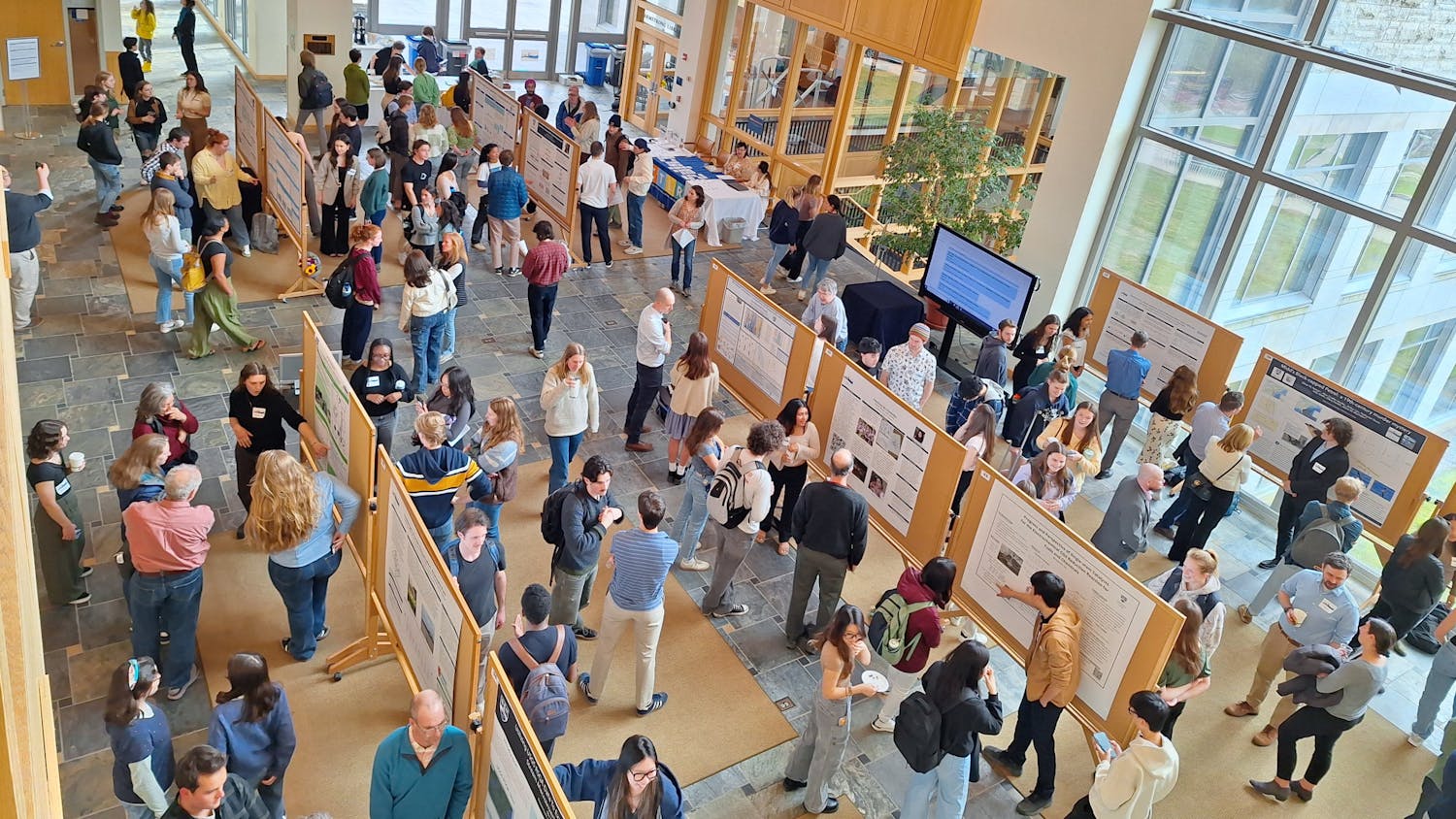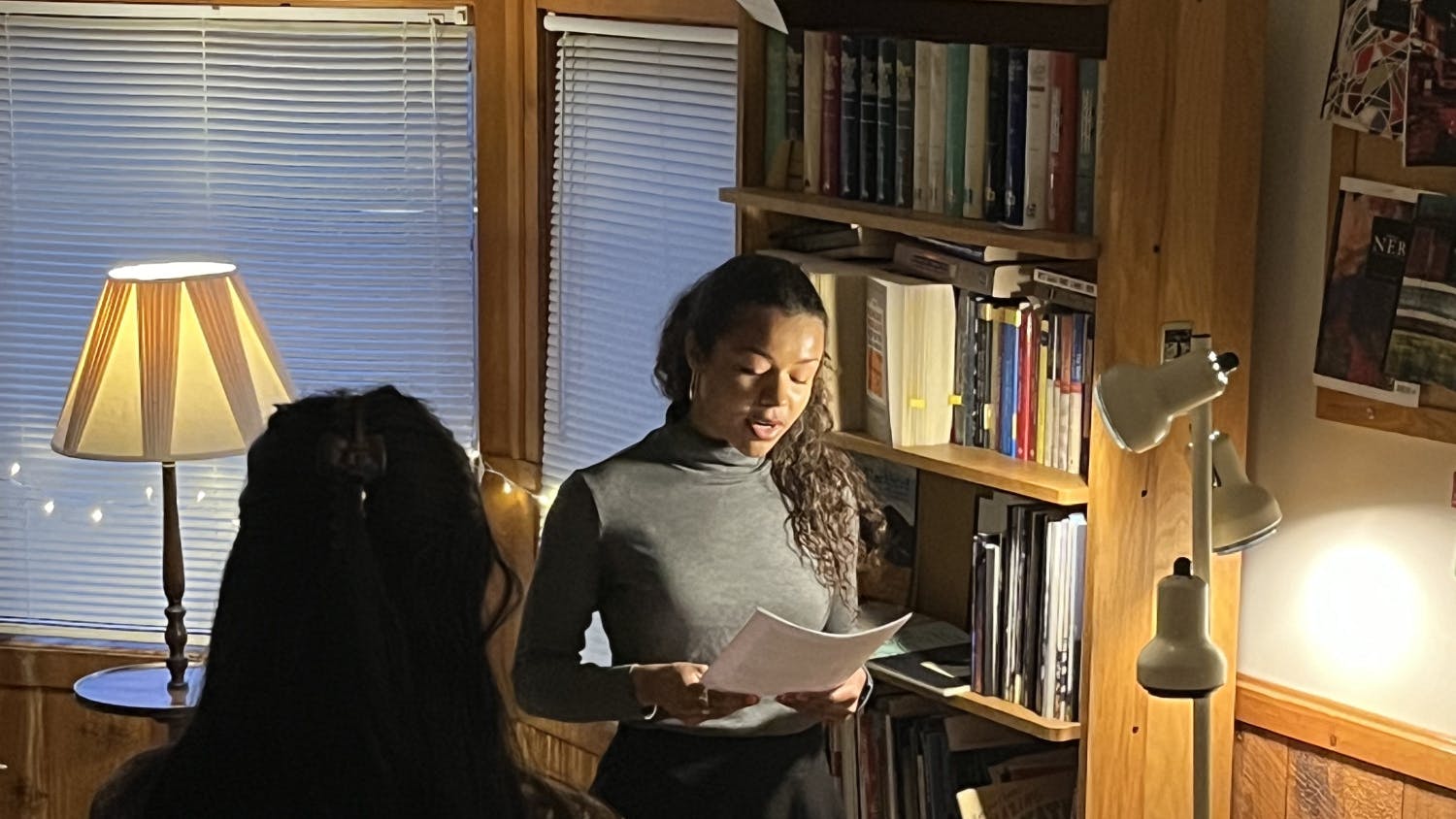Richard Sander, professor of law at UCLA, defended his controversial “mismatch theory” at a lecture held at the Kirk Alumni Center on Tuesday, contending that affirmative action policies hurt minority students. Sander was invited by the College Republicans.
His lecture was followed by a Q&A segment moderated by Caitlyn Myers, a professor of economics. Myers noted weaknesses in Sander’s data before raising questions submitted by students to an online form. Finally, audience members asked questions.
Surrounded by Public Safety officers, the Kirk Alumni Center welcomed a myriad of audience members, ranging from curious students to school administrators. Guests were greeted with signs indicating that the event was only open to Middlebury ID holders. The notification added that “Signs, banners, posters, bullhorns, or noisemakers are not permitted inside.”
David Rubinstein ’18 read aloud the Demonstrations & Protests policy of the college handbook before the talk, and Jigar Bhakta ’18 then introduced Sander. Sander began his presentation by citing data from the University of Michigan college and law school. He said that minority students needed significantly lower scores from its internal academic index, based on test scores and grades, in order to receive an offer from the school. He argued that these minority students were academically unqualified to be admitted.
“What you see in the law school, for example, is that African Americans had a 96 percent chance of admission if their index score was above 710,” Sander said. “That is a range where white admissions were very, very low.”
“When you have a system like this, and when you have students going to the most elite institution that admits them, it means that there is going to be a really large racial gap along credential lines,” he added.
Sander presented data on the distribution of first-year GPAs across racial lines at elite schools, arguing that immediately upon arrival, certain minority groups already demonstrated inferior academic performance. He cited data from the California Bar Association, showing that the out-of-state bar passage rate of white students was 68 percent for whites and only 22 percent for African Americans.
Sander said he had difficulty obtaining this data from the California Bar, and lamented the challenges of conducting controversial research.
“We have an incredibly chilled discourse,” Sander said. “I think that does a disservice because the conclusion that a lot of us who engage with this research is that if we can solve these problems, we can substantially ameliorate them, we can very substantially reduce racial disparities for a lot of outcomes.”
Sander said he does not favor a “simple abolition of racial preferences,” but instead favors increased socio-economic preferences and greater data transparency.
Professor Myers then joined Sanders at the podium and presented on empirical evidence. She echoed some of Sander’s points, affirming that racial preferences result in racial test score gaps at top education institutions. She then critiqued his data, pointing to correlated unobservables and small sample sizes as weaknesses.
Myers posed several questions sourced from anonymous student submissions, ranging from skepticism about the extrapolation of data to Sander’s conclusion to questions regarding the social implications of his research and conclusions.
The floor then opened for questions from the audience. Nial Rele ’12, an admissions counselor, delivered an emotional series of questions to Sander.
“I work in the admissions office, and thinking about these topics quite actively — I believe that as educational institutions, particularly highly selective institutions of higher education, we have to be a model for being vehicles for social mobility and equity and change,” he said. “If we are not, what message does that send to our communities?”
Rele continued: “Why are we treating this as an admissions or enrollment problem? Instead how can we think about this as a college environment problem and deal with the problem there? Why are we starting with enrollment? Why are we saying to people critically: you do not belong here?”
In an interview, Elsa Alvarado ’18 said she viewed Sander’s appearance as an opportunity for debate.
“I thought the event was a really valuable opportunity to understand the benefits and shortcomings of affirmative action and to debate ways to reform college admissions. Sander was able to not only present his research but debate his findings with professor Myers and students,” Alvarado said.
“While I may not agree with his conclusions, it was a great discussion to have so that we can try and figure out ways to improve affirmative action as a whole as a means of addressing widespread educational gaps in the U.S.”
Richard Sander Questioned on Research; Focus on the Data
Comments



